The Knysna turaco (Tauraco corythaix), also known as the Knysna loerie in South Africa, is a majestic bird belonging to the group of African musophagidae species. It is a resident breeder in the mature evergreen forests of southern and eastern South Africa, as well as Eswatini. Formerly, it was occasionally considered a subspecies of the green turaco found in West Africa.
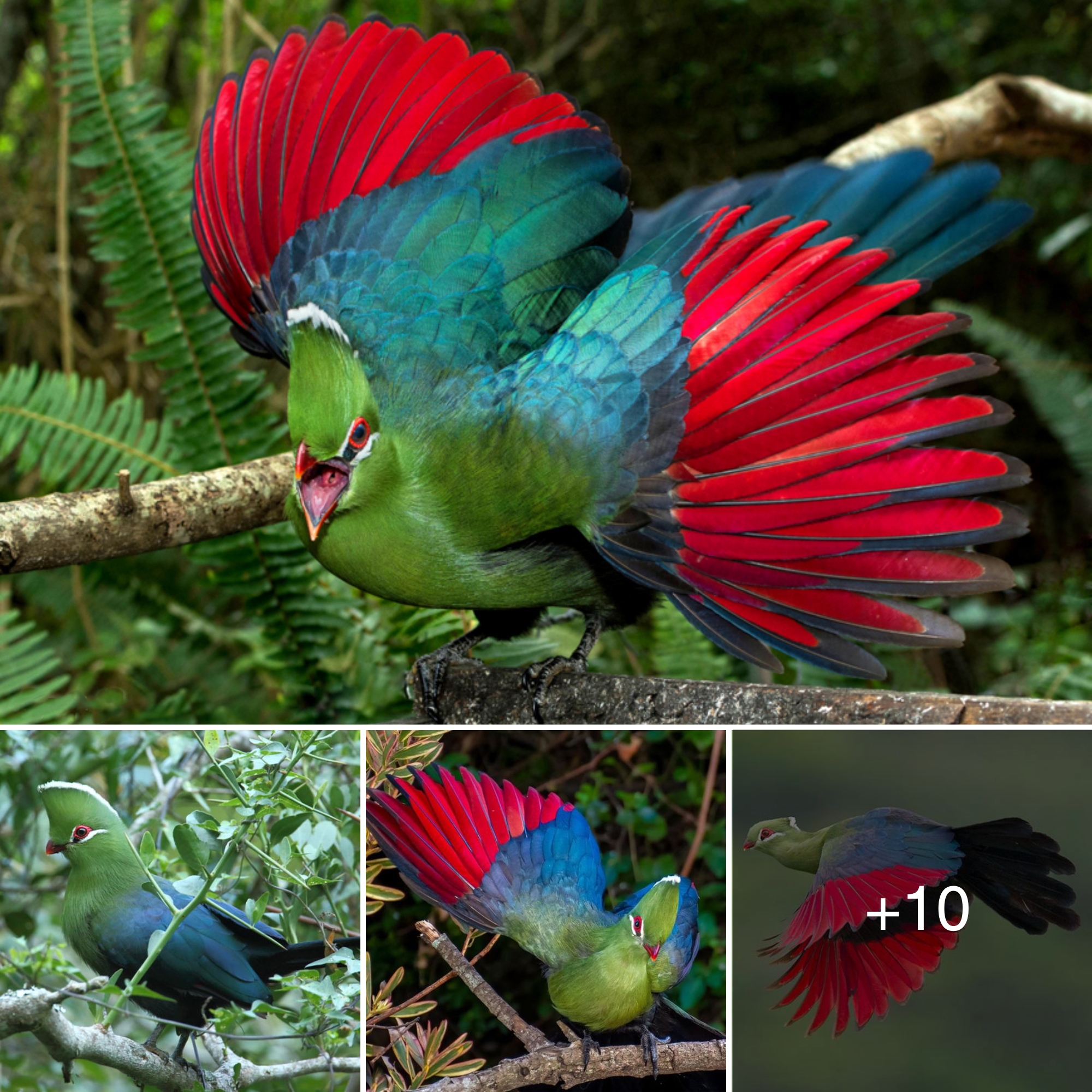
This striking bird lays typically two eggs in a shallow platform nest constructed from sticks and positioned in a tree or clump of creepers. In appearance, the Knysna turaco is unmistakable within its range, though it may often remain inconspicuous in the treetops. With a length of 40–42 cm, including a long tail, its small yet thick orange-red bill and a white line just under the eye stand out against its mainly green plumage. Additionally, it boasts a tall green crest, tipped with white, while its eye-ring is deep red. During flight, the Knysna turaco displays conspicuous crimson primary flight feathers. While both sexes share similar appearances, juvenile birds feature a shorter crest without the distinctive white tips.

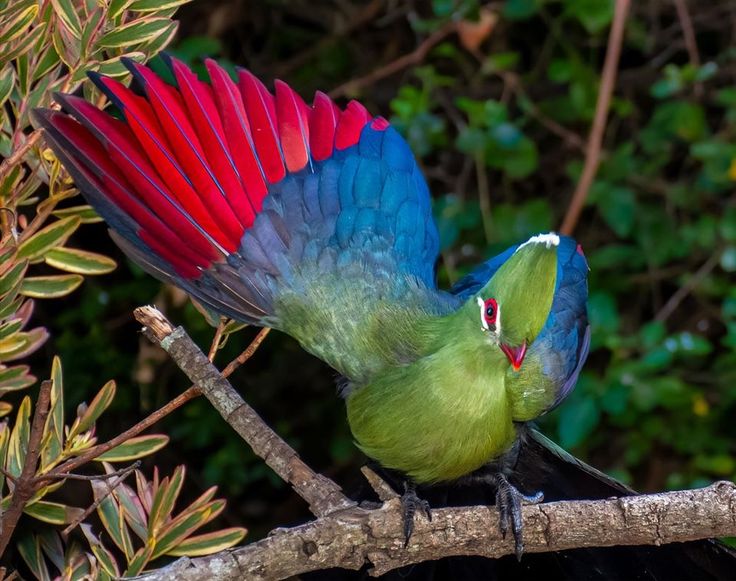
Typically observed flying between forest trees or hopping along branches, the Knysna turaco sustains itself on a diet comprising fruit, insects, and earthworms. Its vocalizations are characterized by a loud kow-kow-kow-kow call.
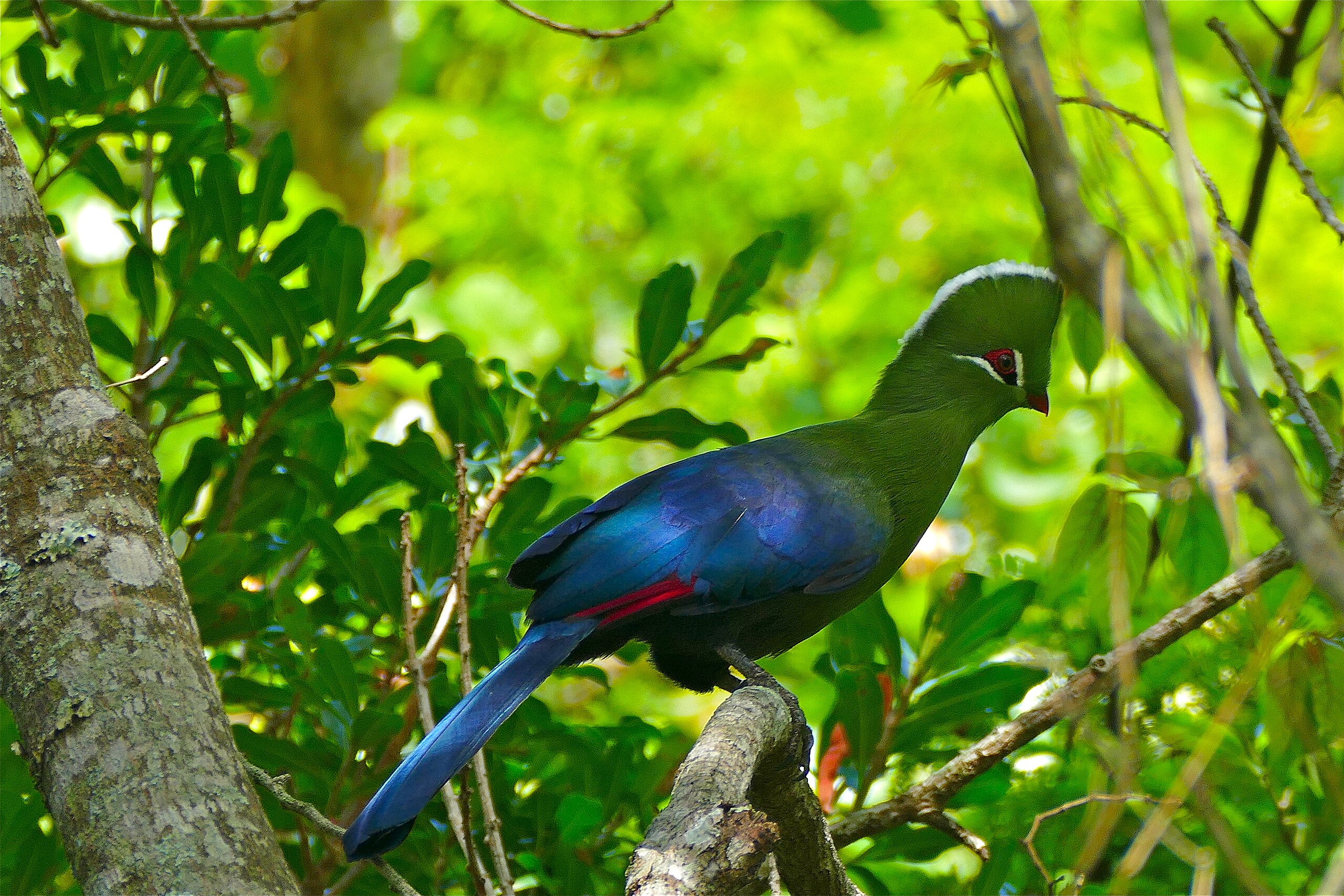
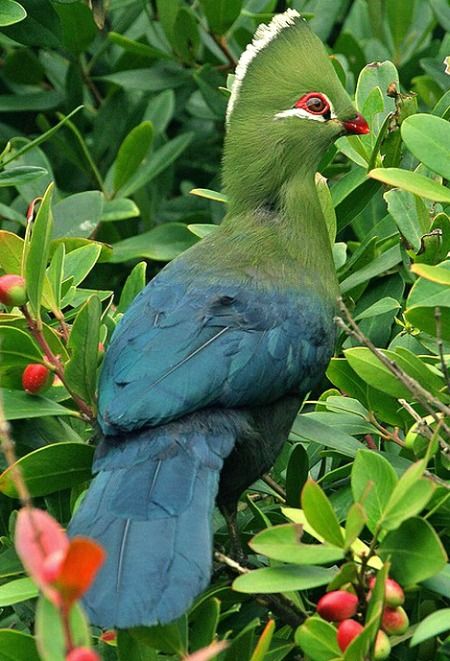
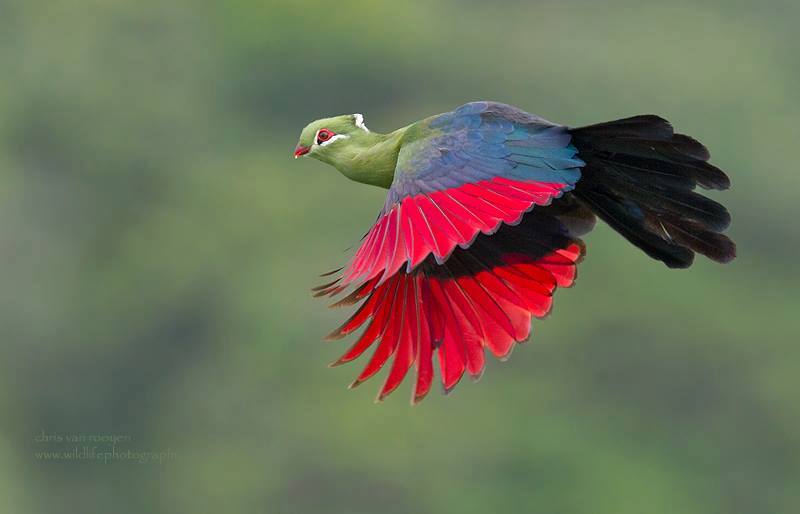
The Knysna turaco belongs to the family known as Loeries in South Africa, although the international designation is Turaco. Unique among birds, turacos possess true red and green coloration. Unlike other birds where coloration results from feather structure reflections, the turaco’s red pigment (turacin) and green pigment (turacoverdin) contain copper. Interestingly, if a red turaco feather were stirred in a glass of water, the water would turn pink due to the copper content. Notably, the red wing feathers of the Knysna turaco are believed to aid in escaping predators. When in flight, predators are likely to focus on the most visible color, following the red patch. As the turaco manipulates and folds its wings, the red feathers become invisible, enabling it to escape unnoticed.